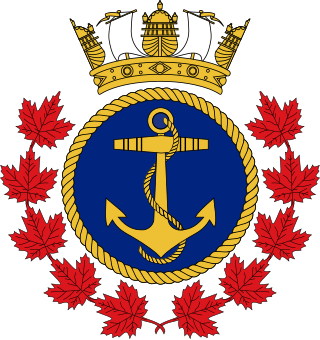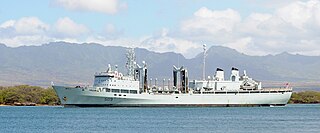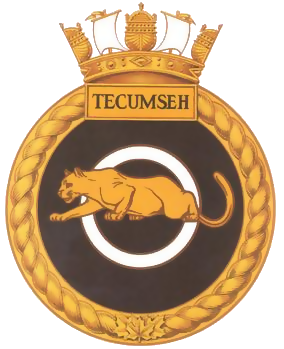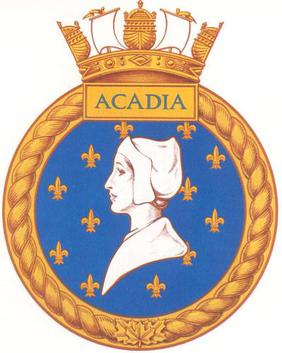Related Research Articles

The Royal Canadian Navy is the naval force of Canada. The RCN is one of three environmental commands within the Canadian Armed Forces. As of 2023, the RCN operates 12 frigates, four attack submarines, 12 coastal defence vessels, eight patrol-class training vessels, two offshore patrol vessels, and several auxiliary vessels. The RCN consists of 8,400 Regular Force and 4,100 Primary Reserve sailors, supported by 3,800 civilians. Vice-Admiral Angus Topshee is the commander of the Royal Canadian Navy and chief of the Naval Staff.

The Rush–Bagot Treaty or Rush–Bagot Disarmament was a treaty between the United States and Great Britain limiting naval armaments on the Great Lakes and Lake Champlain, following the War of 1812. It was ratified by the United States Senate on April 16, 1818, and was confirmed by Canada, following Confederation in 1867.

The Royal Canadian Sea Cadets is a Canadian national youth program sponsored by the Canadian Armed Forces and the civilian Navy League of Canada. Administered by the Canadian Forces, the program is funded through the Department of National Defence, with the civilian partner providing support in the local community. Cadets are not members of the Canadian Armed Forces.

Canadian Forces Base Esquimalt is Canada's Pacific Coast naval base and home port to Maritime Forces Pacific and Joint Task Force Pacific Headquarters. As of 2018, 4,411 military personnel and 2,762 civilians work at CFB Esquimalt.

Her Majesty's Canadian Ship (HMCS) Protecteur was the lead ship of the Protecteur-class replenishment oilers in service with the Royal Canadian Navy. She was part of Maritime Forces Pacific (MARPAC), homeported at CFB Esquimalt, British Columbia. Built by Saint John Shipbuilding and Dry Docks in Saint John, New Brunswick, she was commissioned on 30 August 1969. She was the first Canadian naval unit to carry the name Protecteur; however, there have been several units, including a base, named HMCS Protector.

HMCS Tecumseh is a Canadian Forces Naval Reserve division (NRD) located in Calgary, Alberta. Dubbed a stone frigate, HMCS Tecumseh is a land-based naval training establishment crewed by part-time sailors and also serves as a local recruitment centre for the Royal Canadian Navy (RCN). It is one of 24 naval reserve divisions located in major cities across Canada.

HMCS Ontario was a Minotaur-class light cruiser built for the Royal Navy as HMS Minotaur (53), but transferred to the Royal Canadian Navy on completion and renamed Ontario.

Several Canadian naval units have been named HMCS Acadia.
His Majesty's Canadian Ship (HMCS) Prevost is a Canadian Forces Naval Reserve Division (NRD) located in London, Ontario. Dubbed a stone frigate, HMCS Prevost is a land-based naval establishment for training part-time sailors as well as functioning as a local recruitment centre for the Royal Canadian Navy (RCN). Prevost reserve sailors serve on all classes of ship on both coasts and the Great Lakes and have served on many occasions overseas on UN and NATO tours of duty, along with harbour defence units.

HMCS Micmac was a Tribal-class destroyer which served the Royal Canadian Navy from 1945 to 1964. Micmac was the first modern, high-performance warship built in Canada. She was the first of four Tribal destroyers built at the Halifax Shipyard and one of eight Tribal-class destroyers to serve in the Royal Canadian Navy.
Naval Radio Section Aldergrove, or NRS Aldergrove, is a Canadian Forces naval radio communications facility located in both Aldergrove and Matsqui, British Columbia.

HMCS York is a Royal Canadian Navy Reserve Division (NRD) located in Toronto, Ontario. Dubbed a stone frigate, HMCS York is a land-based naval establishment for part-time sailors as well as a local recruitment centre for the Canadian Naval Reserve.
Cornwallis Park is a rural community in Annapolis County, Nova Scotia, Canada. As of the 2021 census, the population was 488, an increase of 1.9% from 2016.

Canadian Forces Base Cornwallis is a former Canadian Forces Base located in Deep Brook, Nova Scotia.

CSS Acadia is a former hydrographic surveying and oceanographic research ship of the Hydrographic Survey of Canada and its successor the Canadian Hydrographic Service.

In the Canadian Forces, Maritime Forces Pacific is responsible for the fleet training and operational readiness of the Royal Canadian Navy in the Pacific Ocean. It was once referred to as Canadian Pacific Station.

HMCS Oriole is the sail training vessel of the Royal Canadian Navy based at CFB Halifax in Halifax, Nova Scotia. She is a sailing ketch, currently the oldest commissioned vessel in the Royal Canadian Navy, and also the longest serving commissioned ship. Originally the yacht Oriole IV, the vessel was acquired by the Royal Canadian Navy during the Second World War, then returned to private ownership at the end. Oriole IV was reacquired during the Cold War for use on the East Coast of Canada before switching to the West Coast of Canada in 1956. In 2018, the training vessel returned to the East Coast.
Regional Cadet Support Unit (Atlantic) (RCSU(A)) is the Canadian Forces unit that is responsible for providing support to the Canadian Cadet Organizations (Royal Canadian Sea, Army and Air Cadets) in Canada's Atlantic provinces - Nova Scotia, New Brunswick, Newfoundland and Labrador, and Prince Edward Island. The unit is headquartered at Canadian Force Base Halifax at 12 Wing in Shearwater, Nova Scotia and is an integral unit of National Cadet and Junior Rangers Support Group.
RCSCC Calgary is a Royal Canadian Sea Cadet Corps located in Calgary, Alberta, Canada that has trained youth aged 12–18 in the Royal Canadian Sea Cadets program since 1991.

Navy bands in Canada are part of the Royal Canadian Navy's command structure and overseen by the Music Branch of the Canadian Forces and the Directorate of History and Heritage of the Department of National Defence.
References
- ↑ "RCSU(A) - HMCS Acadia - Welcome to HMCS Acadia". Archived from the original on 2007-02-14. Retrieved 2010-11-13.
- ↑ "RCSU(A) - HMCS Acadia - Our History". Archived from the original on 2007-02-14. Retrieved 2010-11-13.
- ↑ Defence, National (2021-12-02). "Cadet Summer Training 2022". www.canada.ca. Retrieved 2022-01-05.